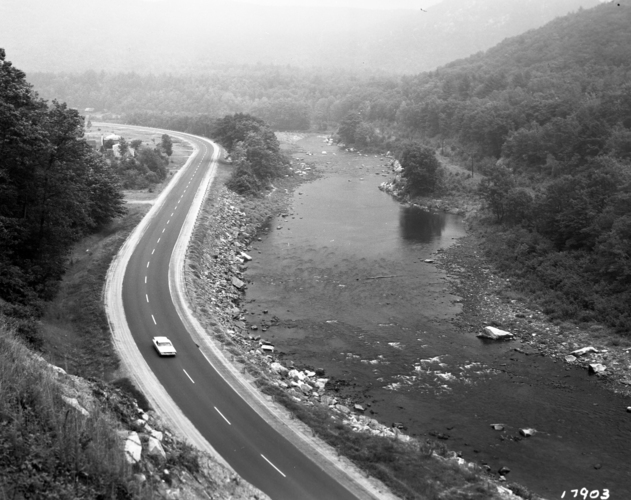WILLIAMSVILLE — The torn-up miles of Vermont Route 30 between Brattleboro and Newfane is no mere repaving project, but a full-depth reclamation (FDR) of the road surface. FDR requires making several passes over the 10 miles that run from the corner of Cedar Street in Brattleboro to about a mile south of Newfane Village, just past Brook Street.
During this first phase, the road is being milled and the asphalt pulverized, mixed with gravel, and compacted. This is also when the roadway will be graded, raised where needed, and banked according to current design standards. These initial processes are expected to last through June.
Paving will follow in three separate layers. A sub-base of recycled asphalt will be laid down first (mid- to late July), then an intermediate layer of asphalt will be added (early August) and - finally - the wearing course will complete the resurfacing (mid-September).
The new signs, paint, and guardrails are expected to be installed and the project completed sometime in October.
* * *
There's no question: this section of Route 30 was in bad shape with what amounted to ruts in the asphalt - ruts that filled with water in the rain and made driving more dangerous than usual.
But the project is also one in a long line of such efforts since I first traveled this road in 1965. That road had few guardrails, no shoulders, and many curves. Many parts of this 114-mile state highway from Brattleboro to Middlebury have been improved since then.
The last time such a project took place on this section of Route 30 was in 1995, the year I moved to Newfane. That project involved relocating about a mile of the highway to eliminate a dip and a curve along a narrow section of roadway that was replaced with a wide straightaway up a hill.
While flaggers stopped traffic for workers and machines, I watched the mile-long section of forest cleared, graded, and paved. It made me curious: If a single mile caused this much disruption, what did clear cutting four lanes of 323 miles for Vermont's interstate highways entail? And, how did the Interstates change not only the landscape, but also the culture of the state?
I've been spending most of my adult life answering these questions in a trilogy of novels: in one set in 1958, during early construction of I-91; in another set in 1964, when people like me started to arrive on the new road; and in an unfinished novel that spans 30 years, from 1985 to 2015.
It took 20 years to complete I-91, required 50 acres of land for each mile, and up to 150 acres for each on/off ramp.
The cost? A million dollars a mile and the life of Romaine Tenney, who, rather than let his farm be taken by eminent domain for the highway, burned it down - with him inside.
* * *
The current project of rehabilitating 10 miles of Route 30 is expected to cost $23 million. But what I think about while I'm waiting for an automated flagger assistance device (AFAD) to let me pass is how much traffic this state highway carries, how much carbon we emit in both necessary and recreational travel up and down the valley, and how much carbon the machines doing the work release.
I was 9 years old on that first visit to Vermont, and all I knew then about pollution was from the Tom Lehrer song of the same name, recorded on vinyl. By 1995, when the state straightened Route 30 in Newfane, I'd lived through the oil embargo of the 1970s and gained an inkling that energy conservation mattered.
It's now 2023, and I'm becoming aware that the “good” mileage I get in my hybrid doesn't account for the carbon emitted in building, maintaining, and rebuilding the roads.
I've recently learned that an 80-year-old red oak in the northern forest sequesters about the same amount of carbon as driving a car 12,000 miles - about what my husband, Tim, and I do in the course of a year.
Maybe, if I plant an oak now, by the time it's 80, we'll have figured out transportation systems with lower carbon emissions.
In the meantime, I'm determined to drive as little as possible. Thanks to the internet, I can earn from home. When I do have to leave, I'll try to combine errands and appointments, carpool if possible, bicycle when practical.
Meanwhile, I'll be either in the word shop or the garden, living in place and - as much as I can - staying there.
